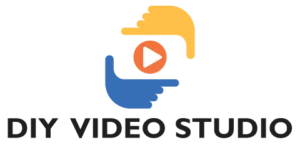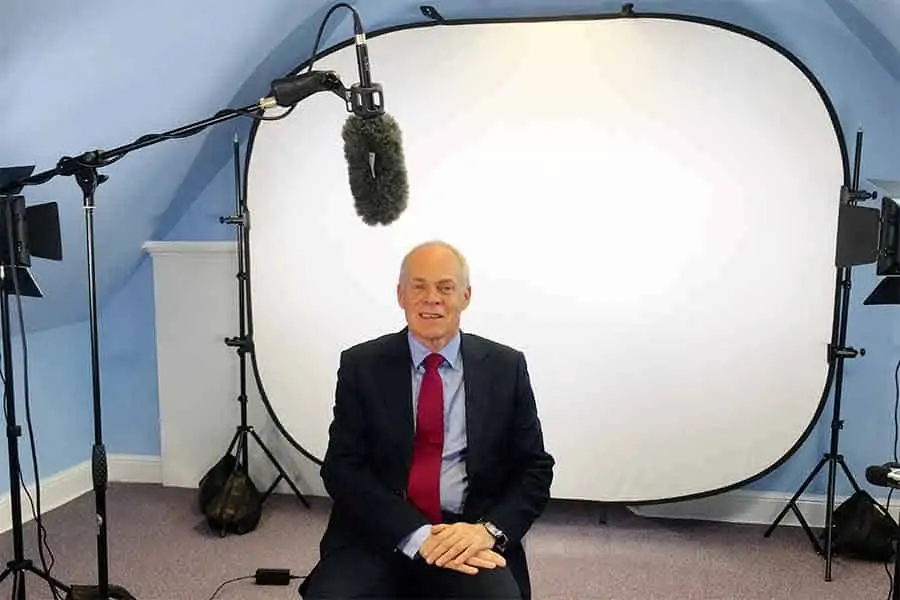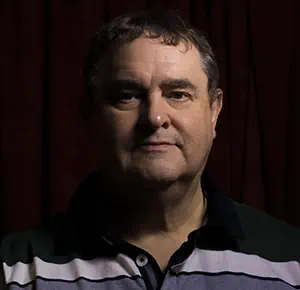DIY Video Studio is supported by its readers. Please assume links on this site are affiliate links or ads, and that I get commissions for purchases made through these links. As an Amazon Associate, I earn from qualifying purchases. Thank you if you use any of the links.
Author: Tosh Lubek Published: 8th February 2024 Editor’s Note: This article was originally published in August 2018 and has been updated for accuracy and comprehensiveness.
Feeling that familiar knot in your stomach at the thought of an upcoming media interview? Don’t worry, even industry experts get the pre-camera jitters. But don’t worry! Mastering the art of the media interview isn’t about magic, it’s about preparation.
Buckle up, because I’ve got 15 essential media training tips to turn your interview into a PR triumph whether you’re facing the bright lights of TV, the intimate mic of radio, or the dynamic world of social media.
Tip 1: Wing it? No way! Prep for your media moment like a pro
Before the recording starts, ask the interviewer what’s their goal for the interview. Then align your responses to help them craft the story. Ensure you anticipate potential questions so you can formulate concise, clear, and confident answers. Preparation is your power play. Use it to shine, not sweat, under the media spotlight.
Tip 2: Ditch the Jargon and captivate the Audience!
Use plain English instead of industry jargon! Imagine you’re speaking to your next-door neighbor or best friend, and not someone in your field. The clearer, the better! Don’t try to impress with fancy terms, just connect and inform. Trust me, sounding relatable beats jargon any day.
Tip 3: Paint mental pictures to make your message stick
Use analogies: Think “light bulb moment, not lecture hall.” Relatable comparisons make complex topics clear. Explain things in a way that makes even grandma go “Aha!” (sorry Grandma). This keeps your message clear, memorable, and way more engaging than jargon.
Tip 4: Bite-Sized Brilliance: Master the Soundbite
Broadcasters crave quotable nuggets or soundbites that pack a punch. Think of short, sharp, and impactful sentences that sum up your point. These will stick in listeners’ minds, long after the interview fades. Master the soundbite and you’ll be asked back again when the journalist needs an expert view.
Tip 5: Lock Eyes, Captivate Minds: The Power of Connection
Eye contact is your secret weapon! Lock eyes with the interviewer or camera for remote interviews. Practice beforehand in front of a mirror, a friend, or a camera to get comfortable holding someone’s gaze.
This connection shows the audience they matter and engages them. Looking away can seem shifty, so hold their gaze and radiate trustworthiness. Then at the end of your answer, finish strong with confident eye contact, leaving a lasting impression.
Tip 6: Leave the Me, Me, Me at the Door: Avoid Self-Promotion Pitfalls
If you’ve been invited as an expert, resist the urge for a self-promotional parade. Focus on the topic of the question. If you shoehorn your product or service into the answer that section will likely be edited out. Overt self-promotion will also undermine your credibility, so stick to providing genuine insight and let your expertise naturally shine through.
Remember, the interview is about the topic, not you. Demonstrate you’re a knowledgeable source to cement a reputation as an authority and pave the way for future media exposure.
Tip 7: If you Stumble, No Sweat! Mastering the Interview Restart
Mistakes happen, even to experts! But here’s how to recover seamlessly:
Quickly admit your misstep and politely request a restart. Don’t panic, the interviewer will accommodate you because they want a clear explanation of the topic that requires the least amount of editing. So, take a breath, refocus your thoughts, and shine by delivering an even stronger and more impactful answer.
Tip 8: Ditch the “Ums” and “Ahs”: Speak with Confidence
Filler words like “um,” “ah,” and “like” might seem harmless, but they can make you sound unprepared, undermine your position as an intelligent expert,
and distract from your message.
Replace those fillers with confident silences or concise transitions to keep your message clear and powerful. Trying to fill the silence is a beginner mistake, pauses can help you in emphasizing a point and bring clarity.
Tip 9: Stay laser-focused on the interviewer
In a studio, distractions and movements in your peripheral vision happen. Ignore them! Maintain eye contact with the interviewer (or camera for remote interviews). The audience can’t see behind the scenes, so if you react to those distractions the audience will lose focus on you and your message.
Actively listen to each question then give yourself a moment to process and deliver a thoughtful response. By mastering your focus, you avoid distractions, radiate professionalism, and ensure your message hits the mark, leaving viewers informed and engaged.
Tip 10: Body Language Bonanza: Speak Volumes Without Saying a Word
Don’t let your body betray your brilliance! Master these power poses:
When seated, sit tall, shoulders back, slight forward lean: Confident and ready to engage the audience. When standing, have one foot forward and shoulders level to avoid swaying and project stability.
Show enthusiasm. Let your facial expressions and gestures reveal a passion for the topic. Positive body language will help amplify your message and make you appear confident and a credible speaker.
Tip 11: Tame the Tremors: Master the Art of Calm Confidence
Nerves happen, but don’t let them steal your spotlight! Don’t fidget, like toe taps, finger drums, and earlobe grazes. They show that you’re nervous on camera.
If seated, clasp your hands on the desk or your lap. When standing, avoid swaying or shifting your weight. Find a balanced stance with one foot slightly forward.
Don’t cross your arms, this creates a visual barrier and can make you appear grumpy or stand-offish.
Close-up shots magnify everything, including small movements. Consciously control your gestures to avoid appearing overly animated, which can seem strange.
If you’re feeling nervous at the start of the interview here’s how to conquer the jitters. Take a few moments to close your eyes and take several slow and deep breaths. This breathing technique has helped me relax and has even lowered my blood pressure.
Practice positive affirmations and visualize yourself delivering a flawless performance. Consider mindfulness techniques like grounding yourself in the present moment.
By mastering these subtle adjustments, you’ll be composed and exude confidence, captivating viewers with your message and not your nerves.
I’ve written an article about developing YouTube presentation skills and calming your presentation nerves. You can read it here.
Tip 12: Voice it appropriately: Mastering the Soundtrack of your interview
Your voice is a powerful tool, use it strategically to connect with your audience, convey your message with clarity, and leave a lasting impression.
Match your tone to the message: Tragedy? Ditch the grin. New product launch? Let your enthusiasm shine! Be mindful of the topic’s gravity and adjust your tone accordingly.
Slow down and enunciate to improve the clarity of your message and land the maximum effect.
Cast off a monotone delivery. Not only is it boring to listen to but it sounds like you’re bored as well. Vary your pitch, volume, and emphasis. Don’t let your sentences fizzle out. Emphasize the final word to signal a clear ending of a sentence and to avoid sounding unsure. Your delivery will be more interesting, show that you’re passionate, and keep listeners engaged.
Powerful speakers tend to use a lower pitch and to be dynamically loud. If you adopt this technique, do it authentically and it will help you project confidence.
Tip 13: Mic Check, Reality Check: Guard Your Every Word
Remember, consider the camera (and mic) to always be live! Even when the “on-air” light isn’t glowing, you’re never truly offstage. Here’s why: Obama learned the hard way – unguarded moments can become viral gaffes.
Don’t try to be “funny” or controversial during a sound check, it might be recorded and played out of context. One careless remark can tarnish your reputation in a heartbeat.
So be “camera-ready” from the moment you arrive or connect to avoid embarrassing blunders and project the polished image you deserve.
Tip 14: Repurpose Media Power: Turn Interview Clips into Website Gold
If you’ve been interviewed on local or national news, don’t let it die after it has been aired. Leverage its benefits on your website.
Most channels will allow the clip to be used on your website, often for free. Although they might require crediting their ownership. You can add the clips to a dedicated “News” section on your website, showcasing your media expertise and industry presence. This might attract the attention of other media outlets considering using you as an industry expert.
For example, in 2016, my exhibition stand at a business EXPO in Dumfries was featured on ITV News in the UK. I secured the clip and license for free, crediting ITV and highlighting their copyright ownership.
Remember, interview clips are valuable marketing tools. By strategically repurposing them with permission, you can attract new visitors, build trust, and establish yourself as a thought leader in your field.
Tip 15: Cultivate the Connection and reap the rewards of media contacts
Don’t just think about snagging an interview, consider it the start of a relationship with the journalist or media outlet. Maintain contact to cultivate the connection for future interview opportunities.
After an interview, express your gratitude and appreciation to the journalist and stay available. Offer yourself as a future resource for their stories and expertise needs. Follow them on social media, and engage with their content so they think of you next time they need an expert viewpoint.
Positive media mentions will boost your brand awareness and credibility, as well as enhance your expert status. Regular appearances solidify your image as a go-to source in your field.
By fostering genuine connections, you open doors to future opportunities, positive press, and valuable industry influence. Remember, media relationships are a two-way street – invest your time and reap the rewards of a thriving media network!
Conclusion
Media interviews offer invaluable opportunities for visibility and credibility in your field. Implement the tips in this article to confidently navigate interviews and maximize their impact on your brand’s reputation and recognition.
About the author: Tosh Lubek is a multi-award-winning broadcaster, writer, and video producer, with 40 years of experience in professional broadcasting and has been using Canon video and stills cameras since 2010. He has worked with radio and TV broadcasters, advertising agencies, and direct clients on a variety of projects including radio and television advertising, online video production, corporate videos, award ceremony motion graphics, and theme park sound design. Tosh has won numerous awards, including a Radio Academy Awards Gold Sony, a Gold, Silver, and Bronze World Medals in the New York Festivals International Advertising Awards. Since about 2007 he has been creating YouTube videos. Tosh has been a sponsor of the “video booth” at HashTag Business Events across the UK.
Recent Posts
Premiere Pro Editors STOP Dragging Clips WRONG! Edit 10x FASTER
Hey there, Premiere Pro users! If you're dragging your video clips from the project panel to the timeline listen up, there's a better way! The program monitor holds some hidden editing superpowers...
Conquer Your Next Media Interview Like a Pro! (With 15 Actionable Hacks)
Feeling anxious about your upcoming interview? Don't worry, we've got you covered! Whether you're a seasoned professional or a first-timer, mastering the art of the media interview can be daunting....



